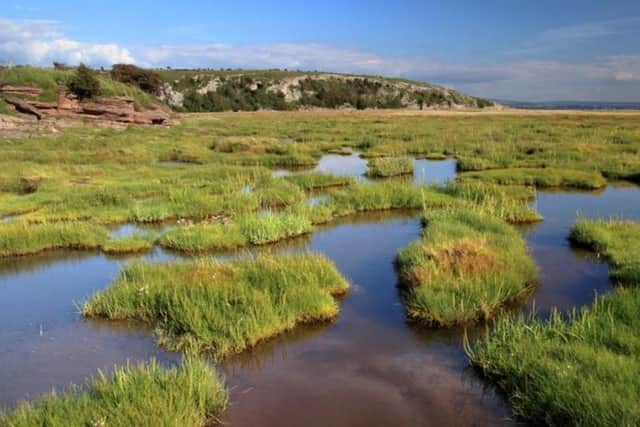New plan for 450m of salt marsh plants to protect part of Fife coastline
and live on Freeview channel 276
On Wednesday, Fife Council's North East Fife area committee officially entered into partnership with St Andrews University to plant 450 metres of salt marsh along the Tayport frontage.
The seaside town is at risk of flooding and erosion as a result of ageing coastal defences and sea-level rise in the long term, according to a study from 2015.
Advertisement
Hide AdAdvertisement
Hide AdSalt marsh planting can mitigate those risks, and the council is now joining forces with St Andrews University to make it a reality.


The £470,000 project will be supported with £30,000 from the council’s existing coastal revenue budget over the next few years.
“Based on the success of the original trials, an opportunity has arisen to part fund a follow-on project to grow, plant, and study salt marsh. The project will again be led by St Andrews University, will be based on the knowledge gained from the previous trials, and this time will aim to plant around 450m of additional salt marsh along the Tayport frontage,” a committee report said.
The salt marsh planting will aim to provide a natural wave buffer to extend the lifespan of the existing coastal defences.
Advertisement
Hide AdAdvertisement
Hide Ad“A spin-off benefit of such a project is the increase in salt marsh area in the Tay Estuary and the positive effects that will have on biodiversity,” a report to committee explained.
It’s not the first time Fife Council has dabbled in salt marsh investment. Between 2017 and 2020, it part-funded planting along approximately 200 metres of Tayport.
St Andrews University has since reviewed the trials and reported a 74% transplant success rate. The planted areas continue to grow and expand to this day.
“The knowledge now exists to have a reasonable chance of success of establishing salt marsh in areas adjacent to the trial site where historic salt marsh habitat has been more severely eroded,” a report to committee said.
Advertisement
Hide AdAdvertisement
Hide Ad“To pursue such an opportunity will involve a small amount of time and a relatively small financial contribution of £10,000 per annum for three years or £15,000 per annum over two years, which would come from the existing coastal revenue budget.”